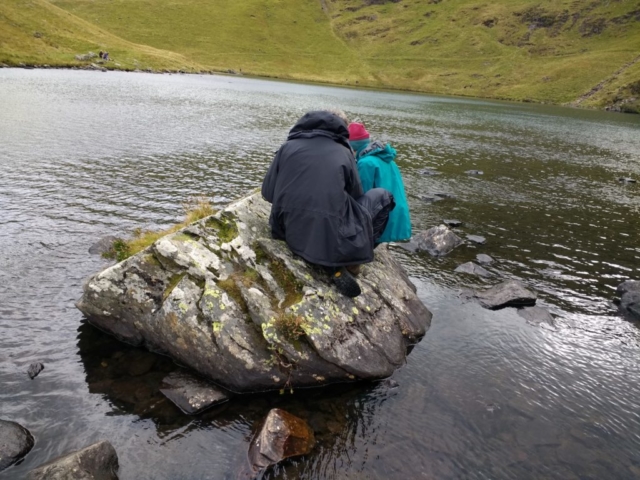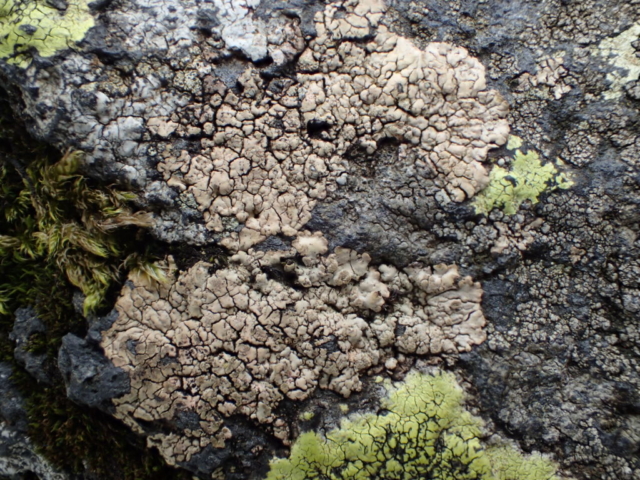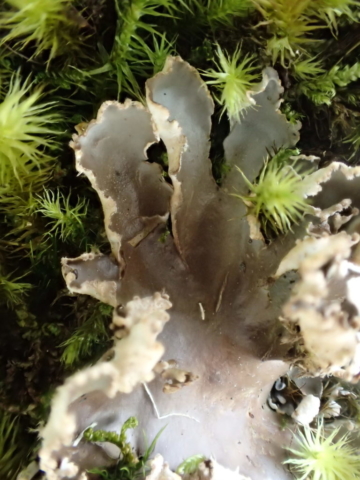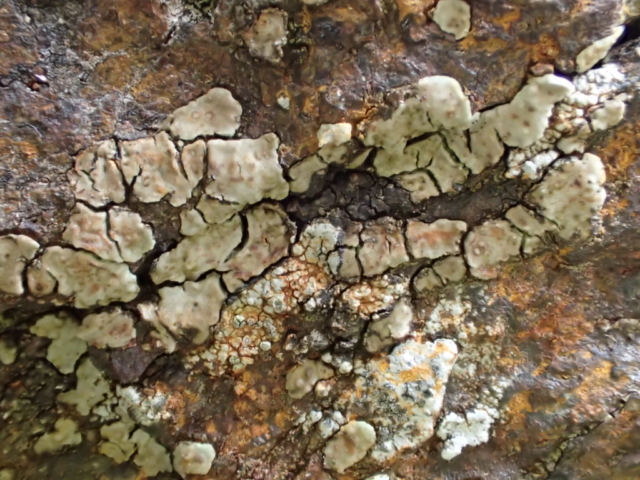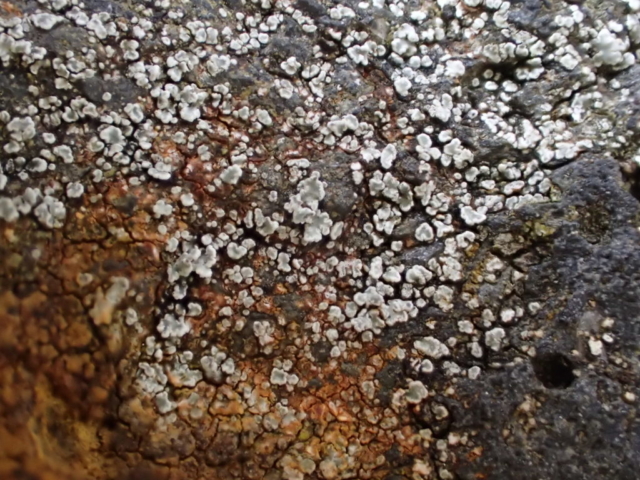Unforecast snatches of sun welcomed us at Mungrisdale. And, once again, we were barely distracted on a long walk in along a good track. Barely distracted I said. There was Trapeliopsis gelatinosa on a soil underhang, but that was it. Apart from several caterpillars and what must have been an oddly plumaged juvenile Kestrel.
But all changed once we rounded the corner of the moraine and were by the tarn. The wind got up. The temperature dropped by several degrees. The cloud thickened. There was no sign of the immortal trout legends say live in the waters. But there were lichens.
A big boulder at the water’s edge occupied us for quite a while, providing a good range of acid rock species: Lecanora intricata and L. soralifera; Parmelia omphalodes, Ochrolechia androgyna, Ionaspis lacustris and Scoliciosporum umbrinum to name a few. A sorediate and fertile crust proved to be Tephromela grumosa. Chris ventured out to an island and found Protoparmelia badia. The stepping stones and gusty wind didn’t make for a relaxed journey when others followed!
Lunch was taken in a hollow where the wind was a little less gusty. There were plentiful Cladonia species amongst the mosses, and Stereocaulons on the glacial boulders: both varieties of S. vesuvianum, S. evolutum and S. dactylophyllum. Presumably the boulders were metal rich. A small Cetraria remained unidentified to species: were the podetia rounded or flattened? Were there any psuedocyphellae and where were they? It seemed best to leave it where it was.
We headed up towards the north-facing back wall of the corrie, where damp little cliffs held the odd tree out of reach of the sheep. Rusty nodules suggested the rocks were metal rich. Caz found the small brown squamules of Massalongia carnosa growing among mosses on a damp face. Beneath a Rowan tree was a Peltigera, the only one we’d found all day. Much discussion ensued. It was glossy, with upturned edges. A slash in its upper surface revealed a white medulla. There was a bit of pruina to the end of one of the lobes at least. Underneath, the centre was dark and there were white patches between flat, spreading veins. The rhizines were pretty pathetic. It went C+ red. So we tentatively thought it was Peltigera neckeri. If it is, it’s the first record for the Lake District, although there are 36 records in the Cumbrian Pennines.
Just yards further on, we found the greeny cracked-mud thallus of Myriospora smaragdula. On a nearby ledge, Chris pointed out a rusty patch. Was it a lichen? Nearby were some small, scattered squamules. Their rims were thicker and paler than the centres, and they looked for all the world like Stereocaulon vesuvianum phyllocladia that are sometimes described as “button-like”. But without the pseudopodetia. Dobson was consulted. K was applied: it went yellow. But so do all the Stereocaulons. UV produced a white reaction. We think we have Stereocaulon leucophaeopsis. Of which not a lot has been found in the Lakes.
After all that excitement, things were bound to slow down. We ambled along the cliffs a bit, but didn’t make it very far before deciding to call it a day, and descend. In fact, we’d barely started to make it along that corrie wall. There’s some interesting looking scree (which might be mine spoil), some interesting looking cliffs and who knows what those trees will have? So we’ll have to come back another time…
Pete Martin, with additional photos by Chris Cant

